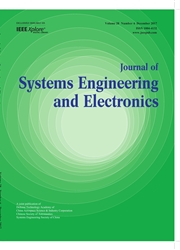

 中文摘要:
中文摘要:
This paper investigates a signal difference-based deadband H∞ control approach for networked control systems(NCSs)with limited resources. The effects of variable network-induced delays, sampling intervals and data transmitting deadbands are considered simultaneously and the model of the NCS is presented.A Lyapunov functional is adopted, which makes full use of the network characteristic information including the bounds of network delay(BND), the bounds of sampling interval(BSI) and the bounds of transmission deadband(BTD). In the meanwhile, the new H∞ performance analysis and controller design conditions for the NCSs are proposed, which describe the relationship of BND,BSI, BTD and the system’s performance. Three examples are used to illustrate the advantages of the proposed methods. The results have shown that the proposed method not only effectively reduces the data traffic, but also guarantees the system asymptotically stable and achieves the prescribed H∞ disturbance attenuation level.
 英文摘要:
英文摘要:
This paper investigates a signal difference-based dead- band H∞ control approach for networked control systems (NCSs) with limited resources. The effects of variable network-induced de- lays, sampling intervals and data transmitting deadbands are con- sidered simultaneously and the model of the NCS is presented. A Lyapunov functional is adopted, which makes full use of the network characteristic information including the bounds of net- work delay (BND), the bounds of sampling interval (BSI) and the bounds of transmission deadband (BTD). In the meanwhile, the new H∞ performance analysis and controller design conditions for the NCSs are proposed, which describe the relationship of BND, BSI, BTD and the system's performance. Three examples are used to illustrate the advantages of the proposed methods. The results have shown that the proposed method not only effectively reduces the data traffic, but also guarantees the system asymptotically sta- ble and achieves the prescribed H∞ disturbance attenuation level.
 同期刊论文项目
同期刊论文项目
 同项目期刊论文
同项目期刊论文
 期刊信息
期刊信息
